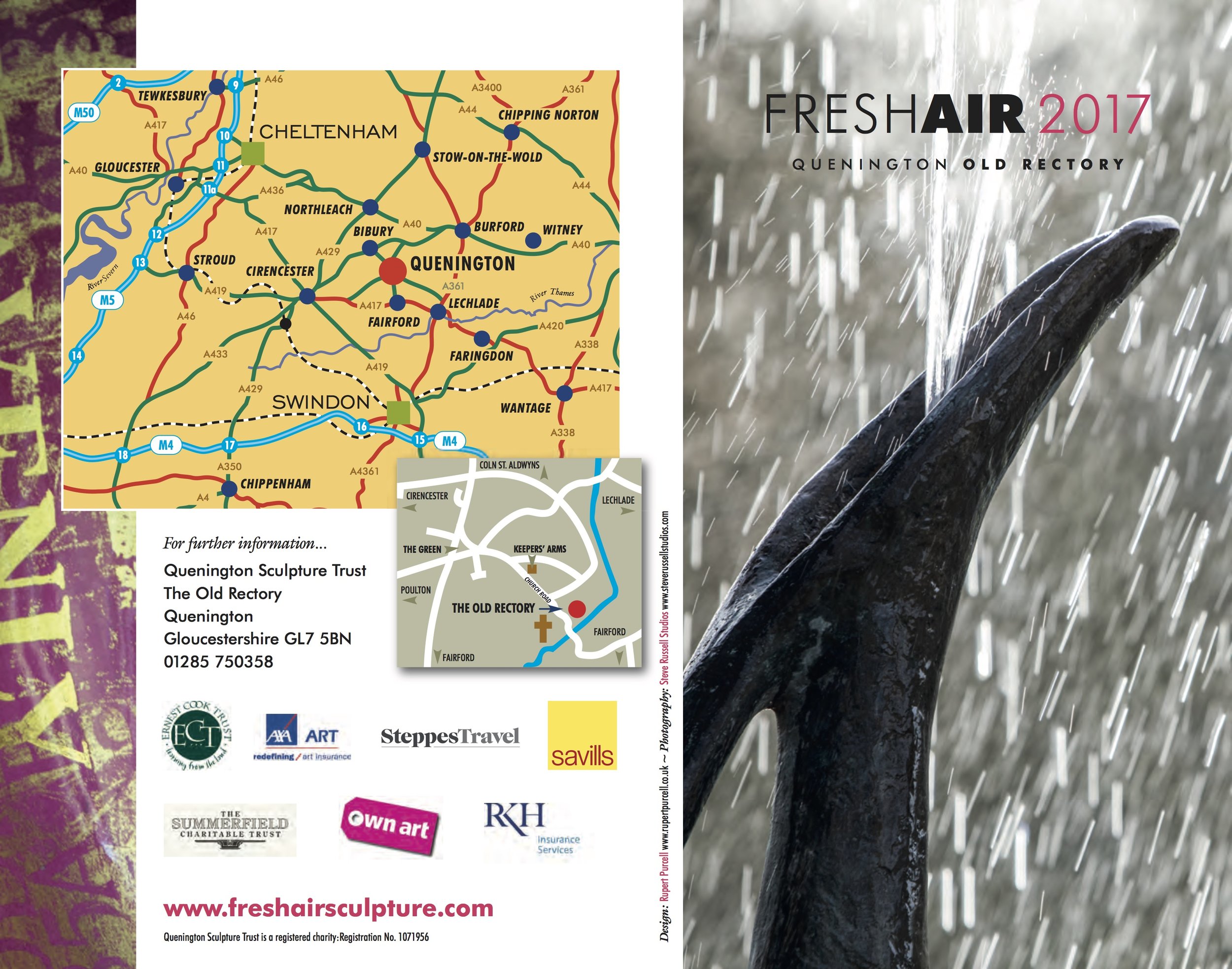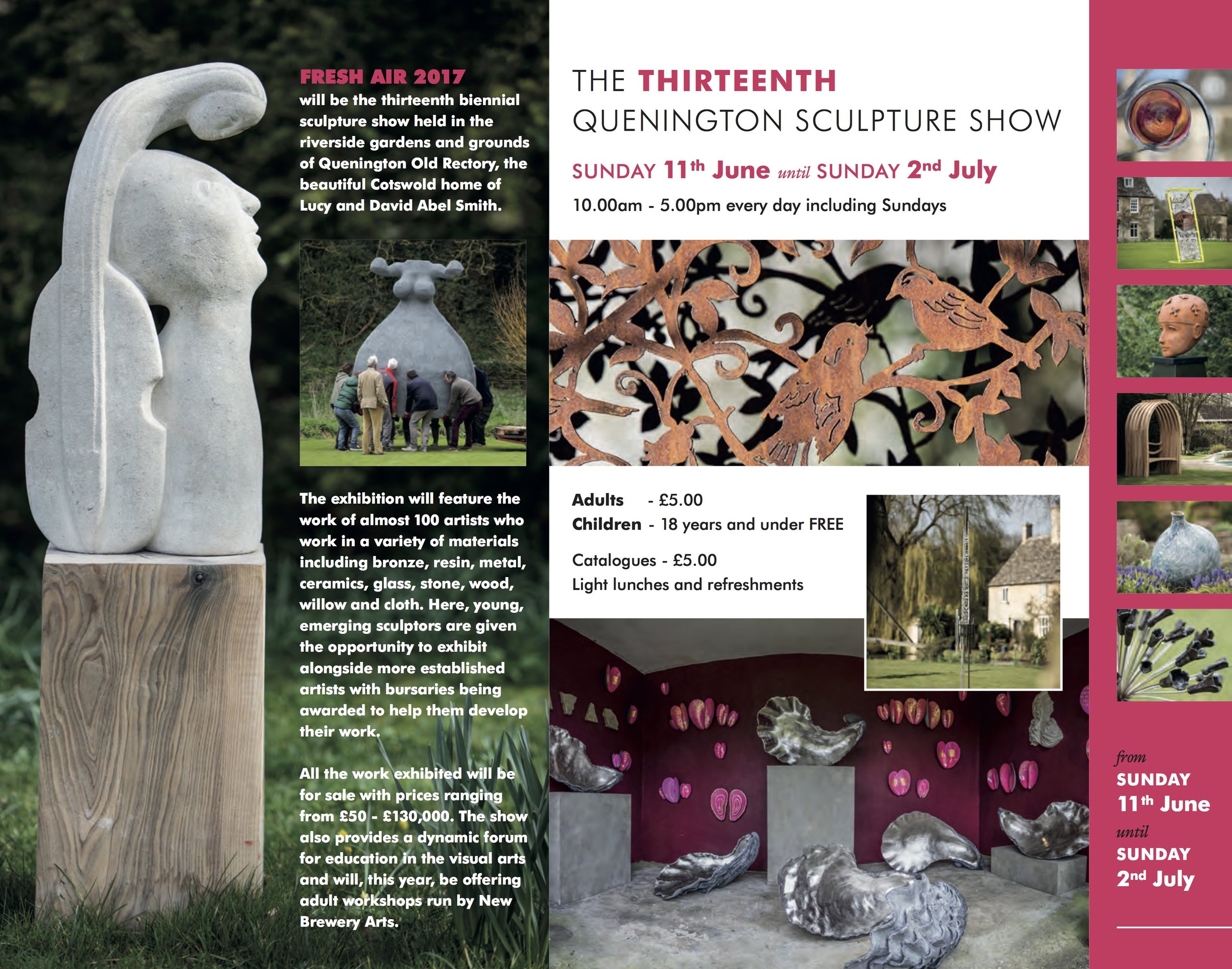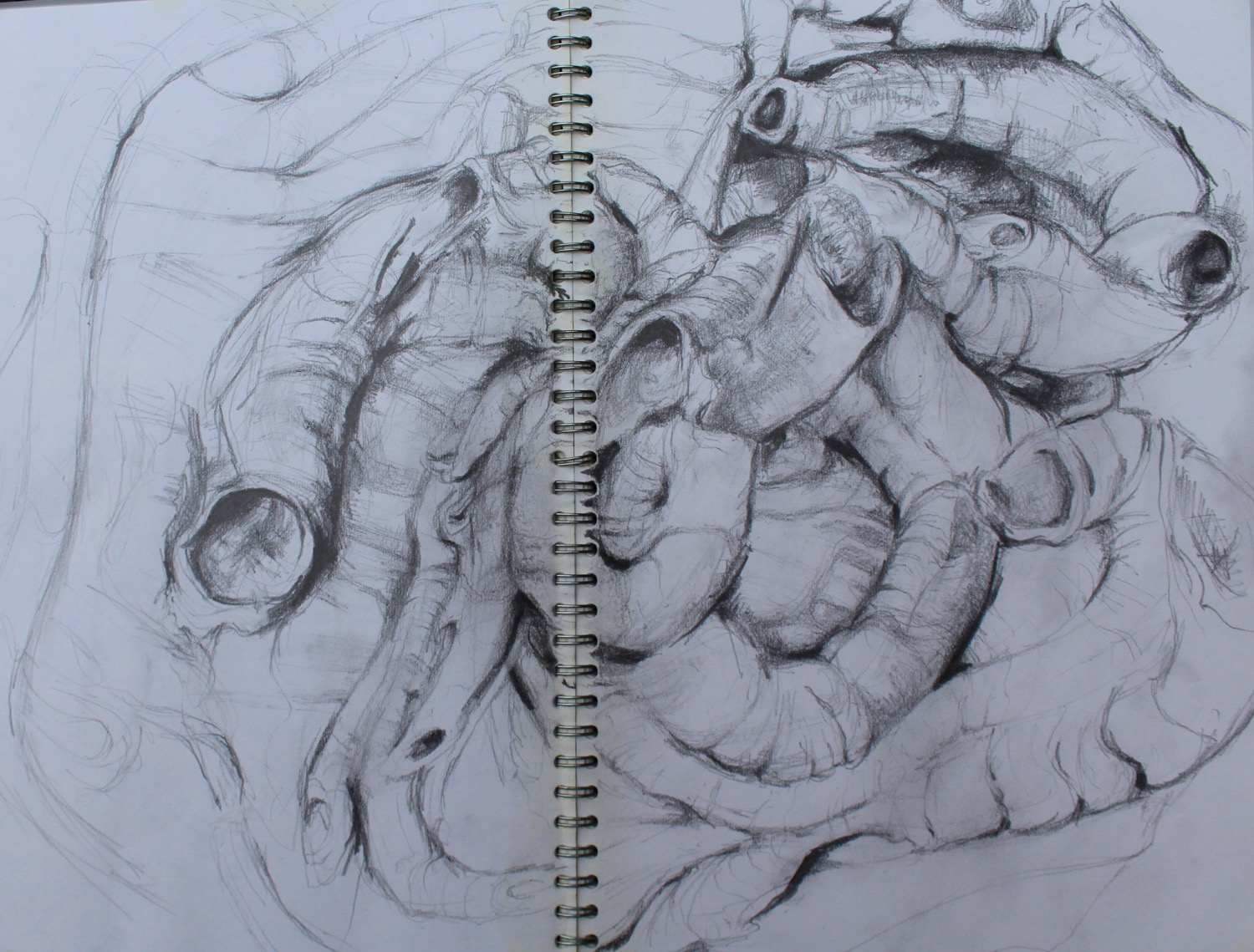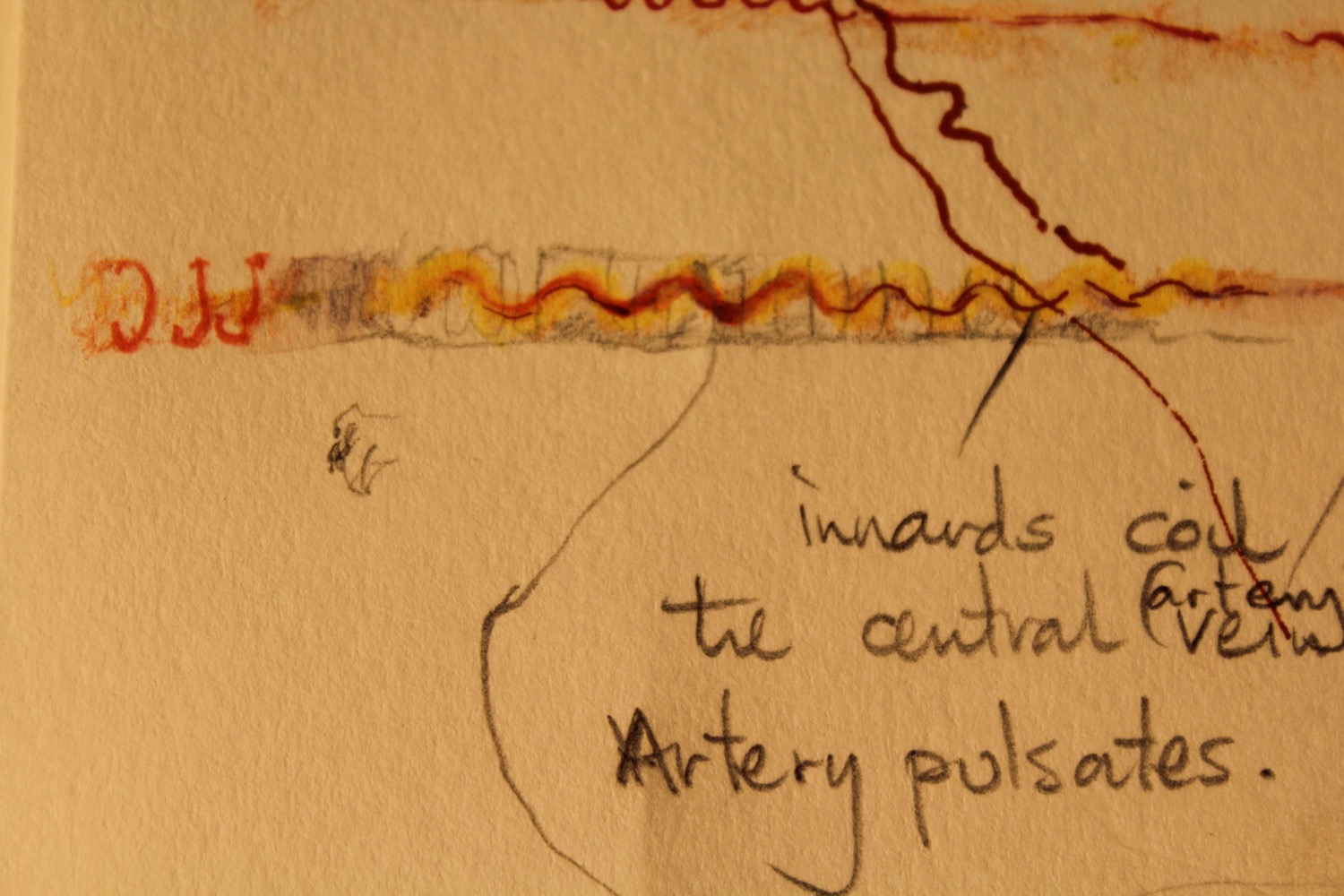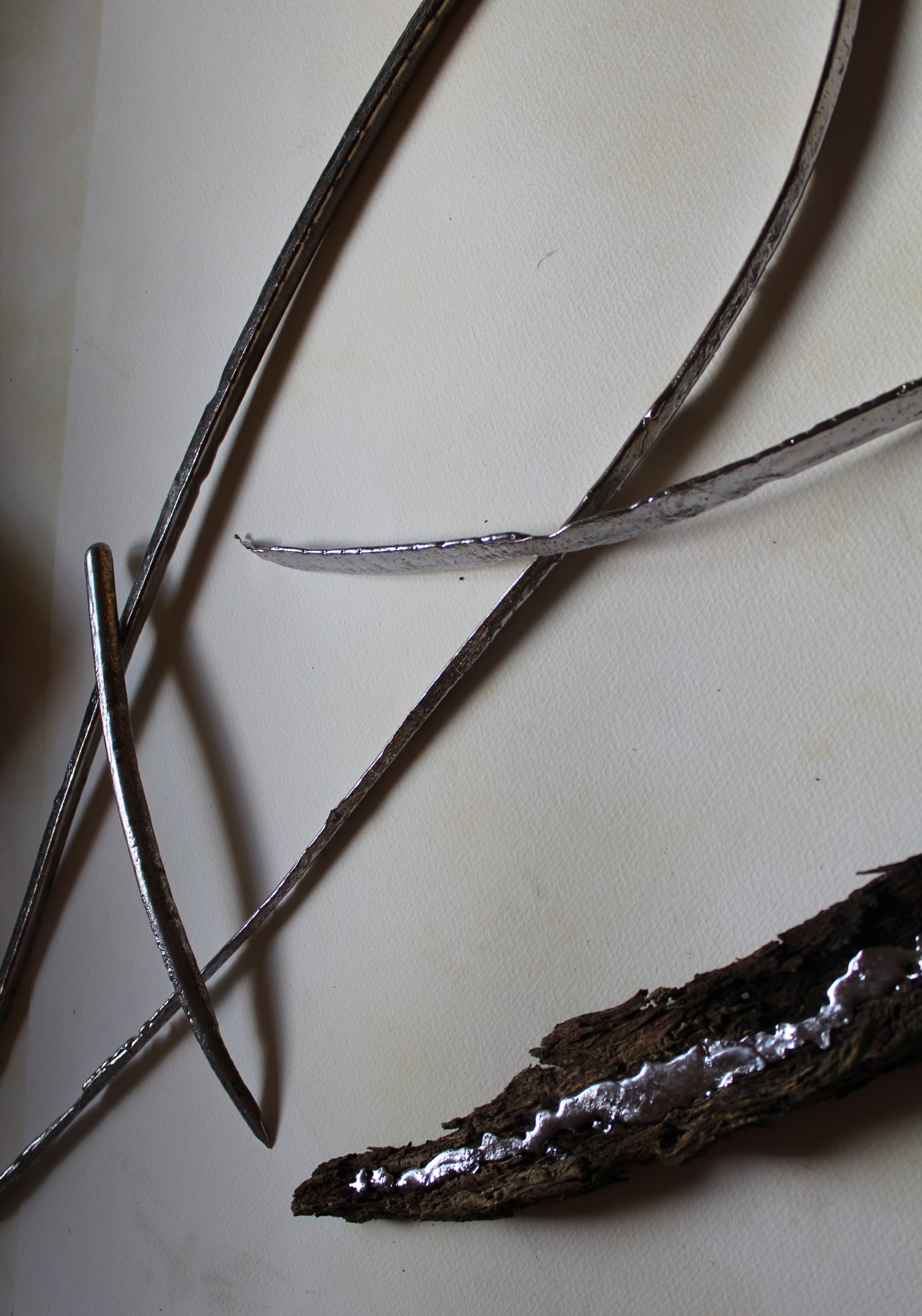 Now that the cold spell is over, I feel a Spring update is due.
Now that the cold spell is over, I feel a Spring update is due.
In my week’s residency at Walcot Chapel, Bath last month as part of my MA, I made a piece (image above) in response to the site, current waste issues, and Coleridge’s Rime of the Ancient Mariner. It was inspired by the plight of 1000’s of albatross chicks dying from stomachs filled with plastic. Entitled ‘Instead of a Cross, an Albatross’, it is a kind of altarpiece. The steel and copper components echoed the trees and shadows through the window. Later this year I’m hoping to make work involving some participatory interaction with the public using waste materials.
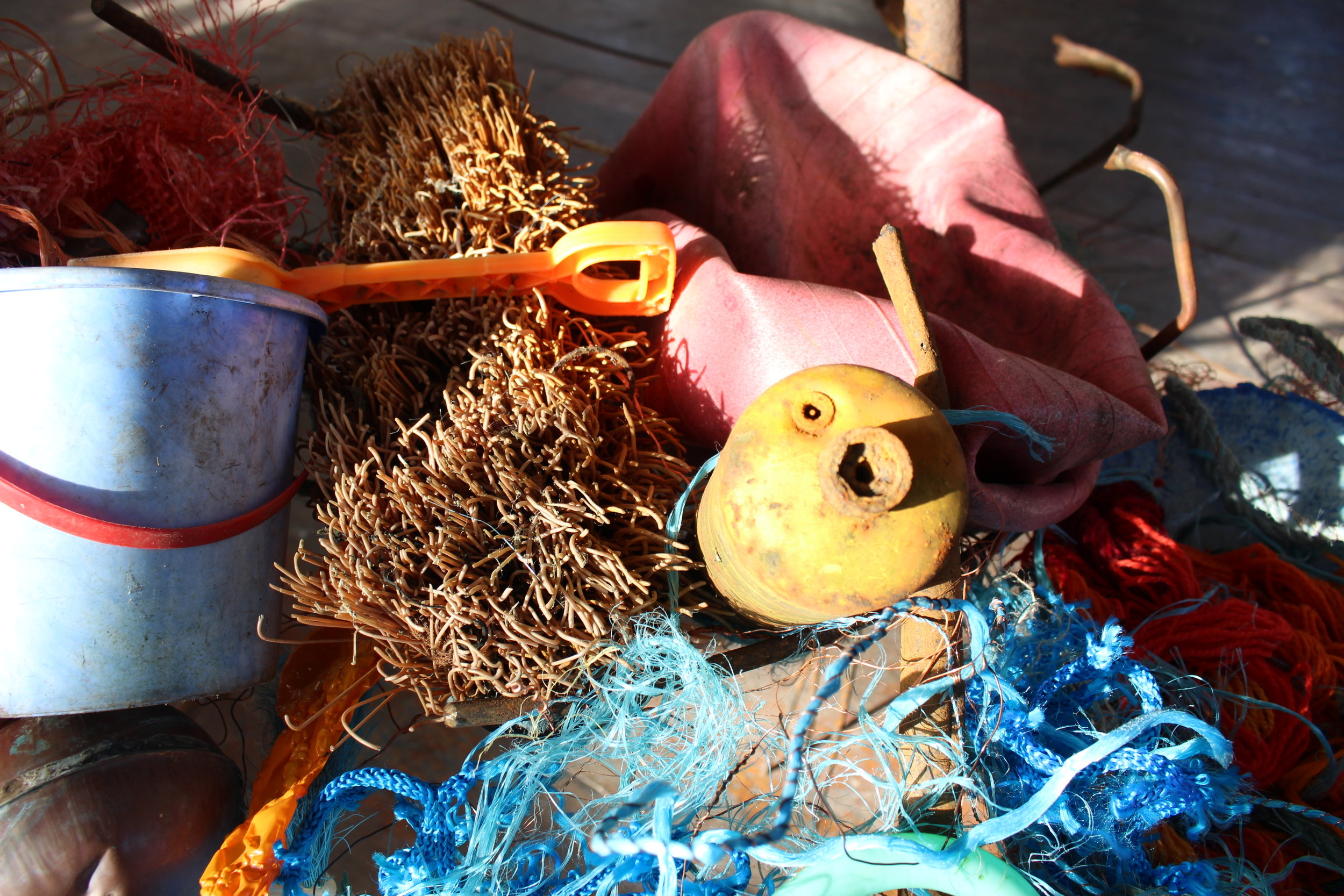
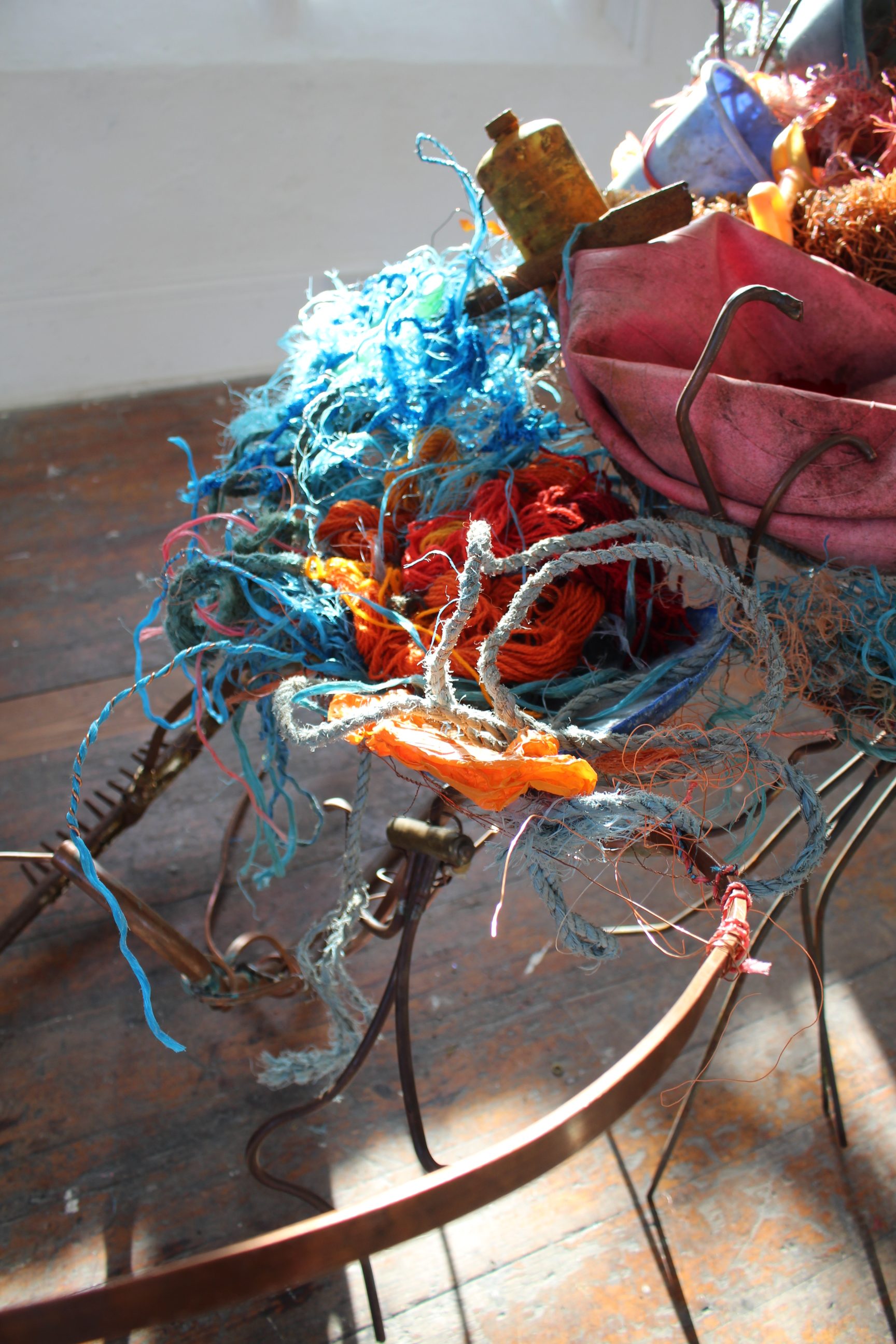
Ongoing work is also being influenced by a book I’ve just read Planet of Slums by Mike Davis, which reveals horrific realities as a result of our rapidly growing worldwide poverty, rich/poor divide - cruel slumlords, neglect and harrowing deaths. Factory farming (particularly a film 'Our Daily Bread') is also affecting my thoughts, and the loss of Tilly, our beloved boxer dog, who died at the weekend. These experimental process pieces are all made from scrap materials.
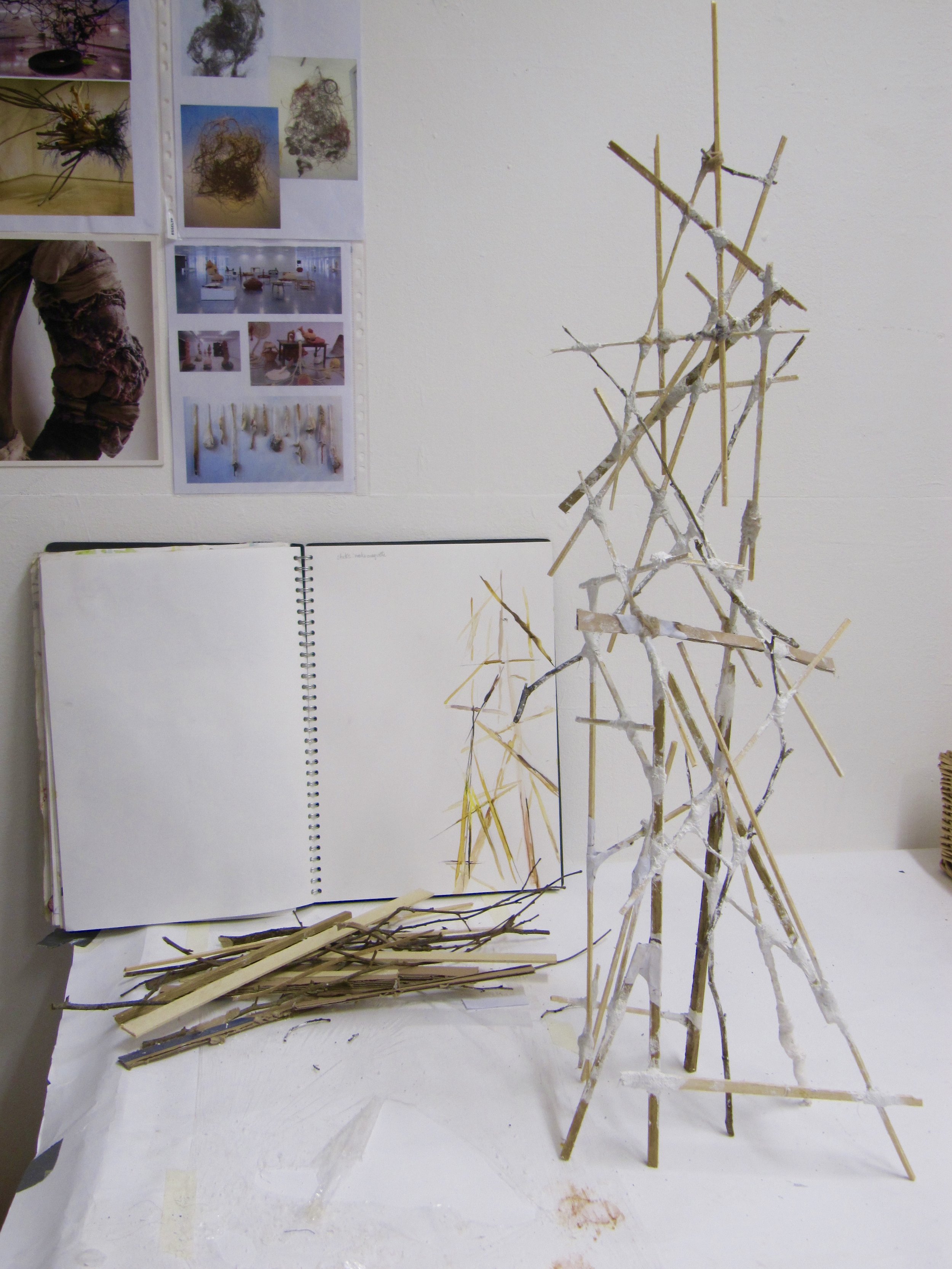
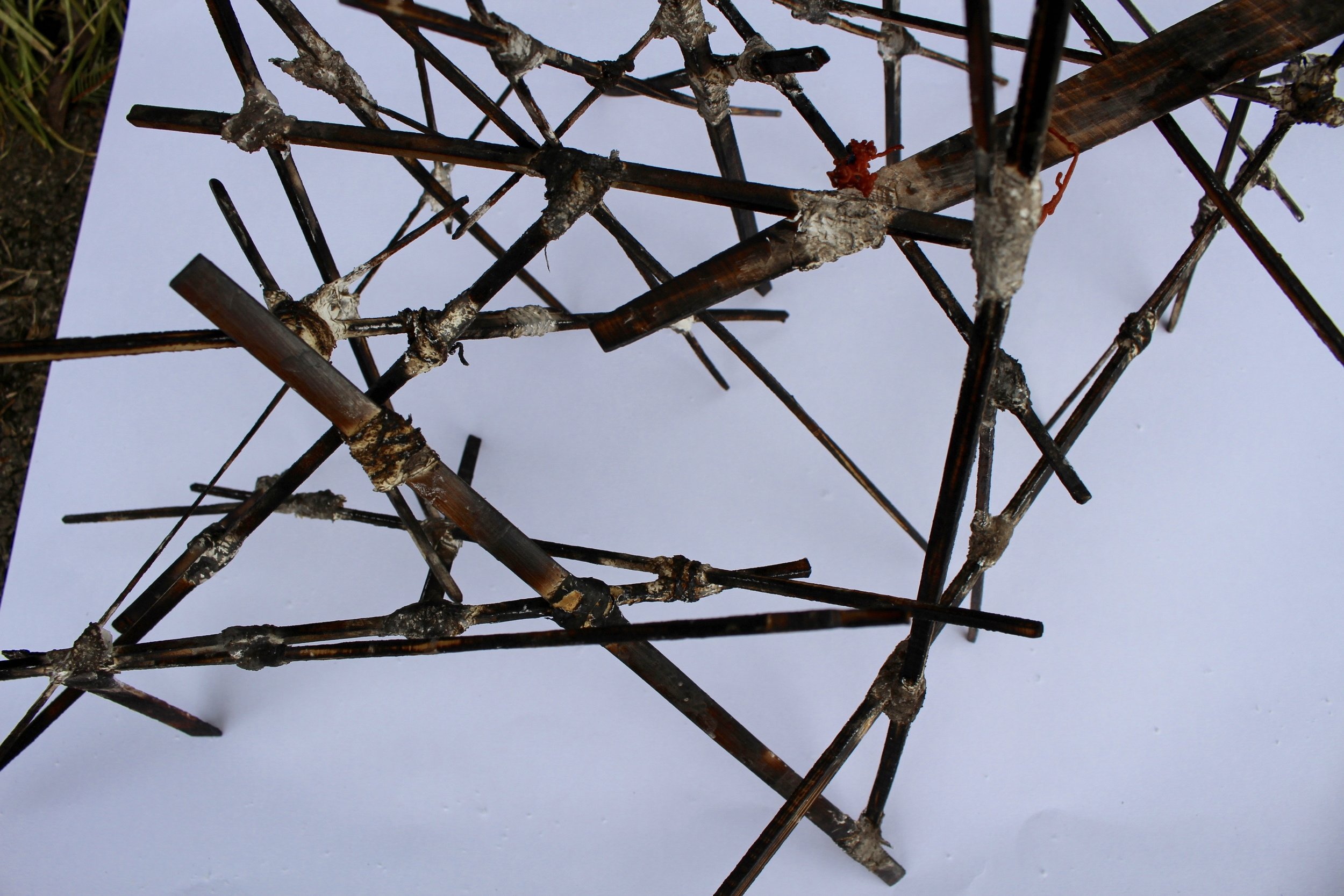
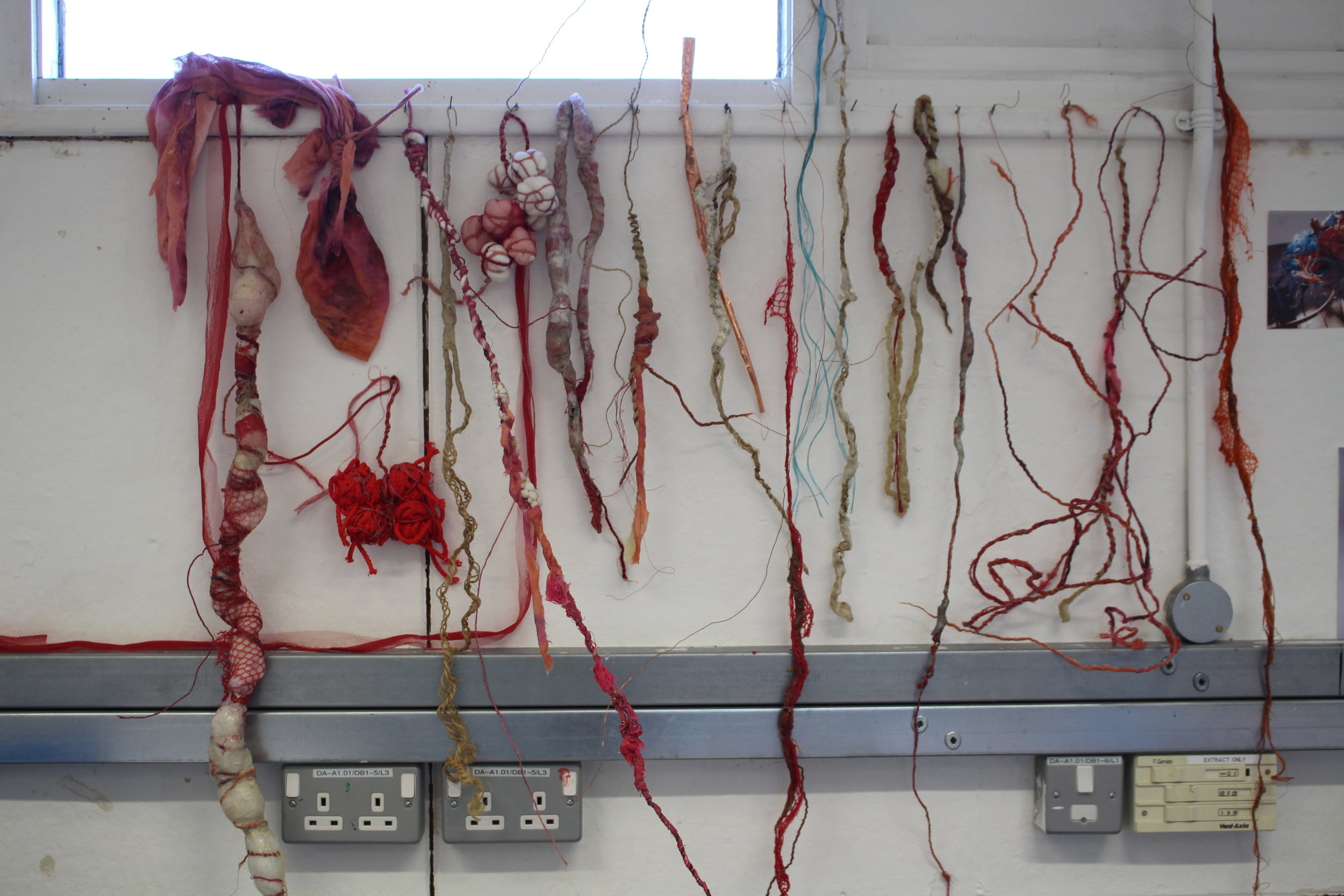
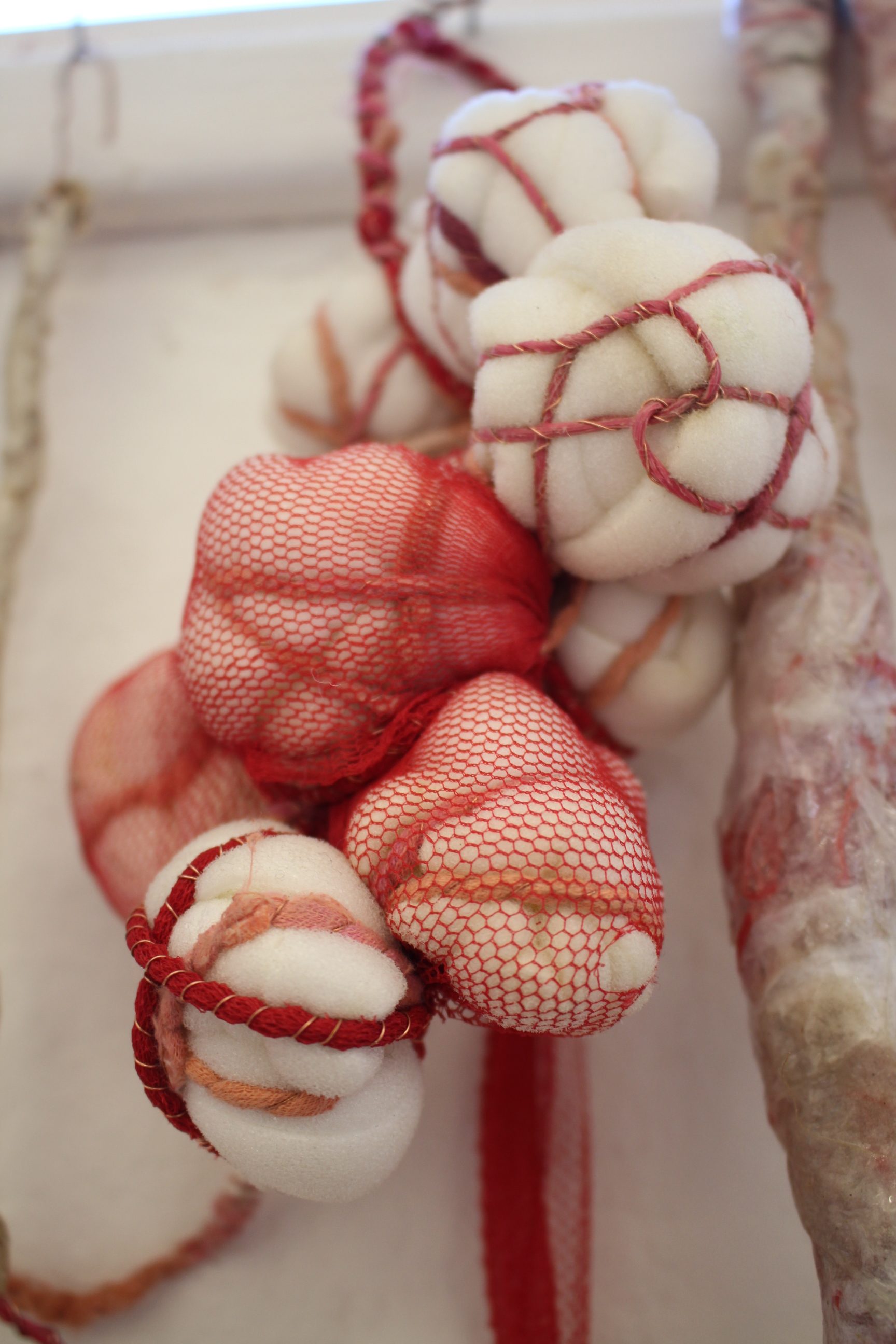
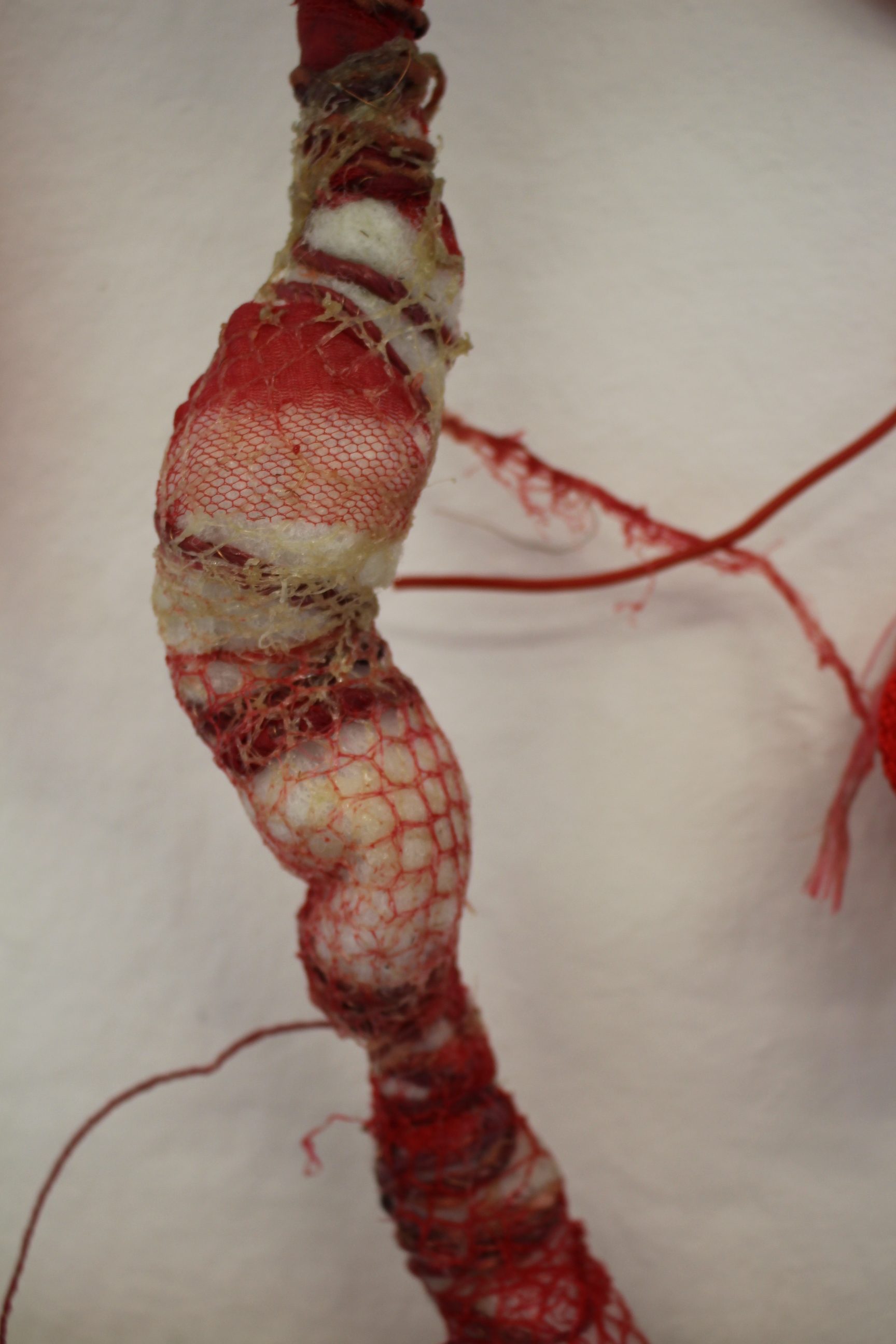
On a lighter note, I continue to teach All Hallows Prep School students extra-curricular art. I'm proud to see some of their work selected for the Black Swan Young Open, starting this Saturday. Last week I ran a workshop with several groups of children Years 4-8 at Hazlegrove Prep School, making a 1.75m flying albatross sculpture out of recycled plastic and wire.
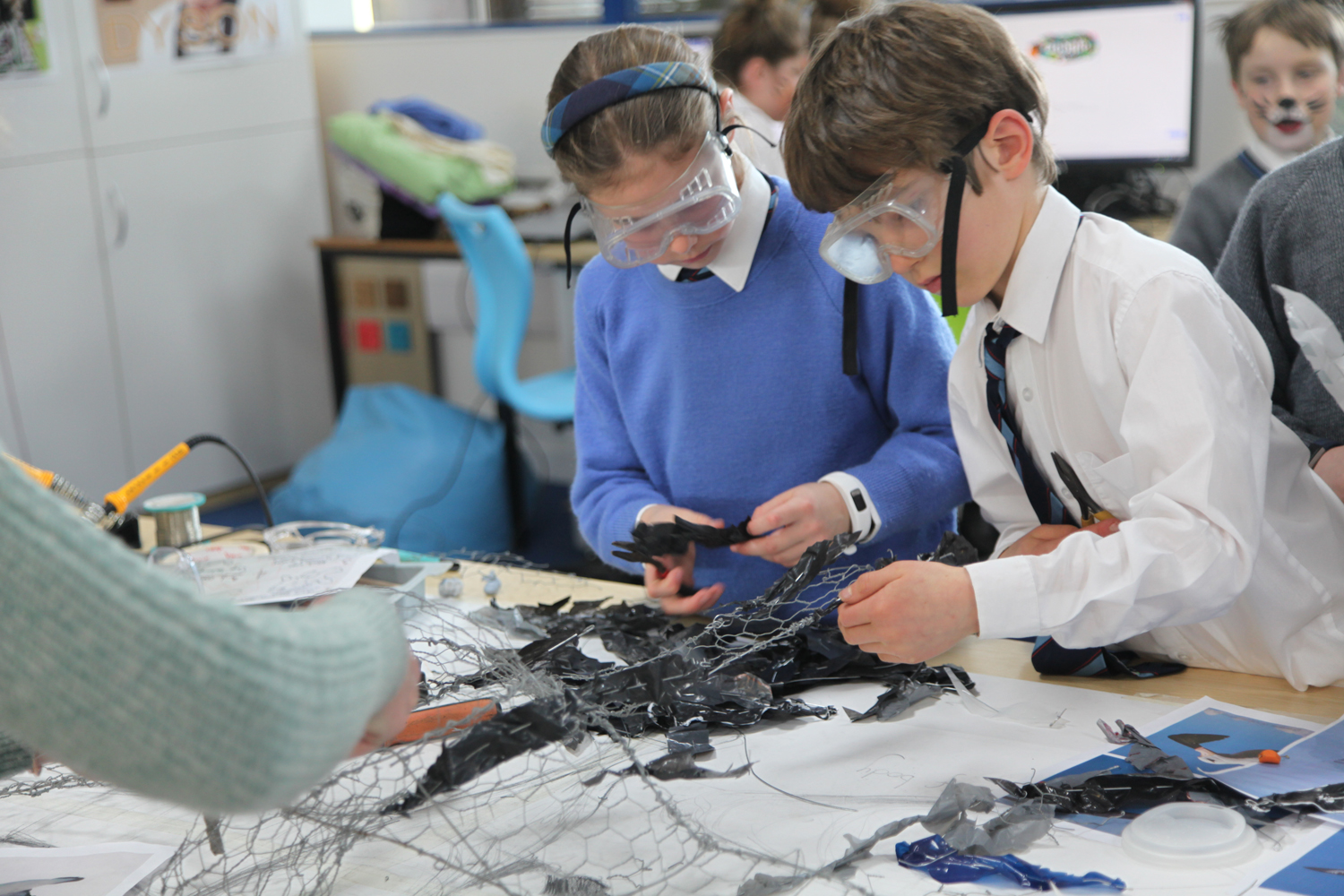
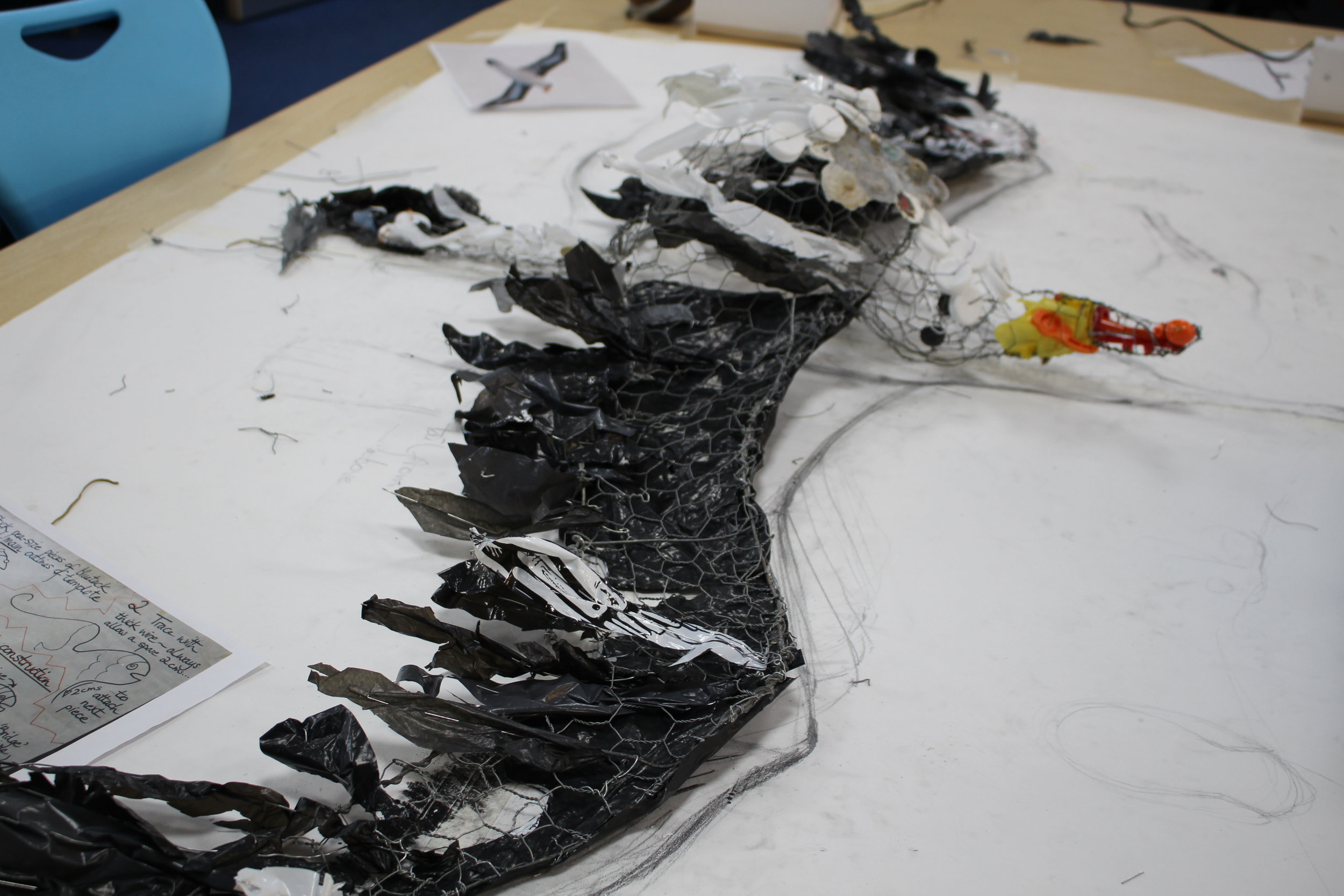

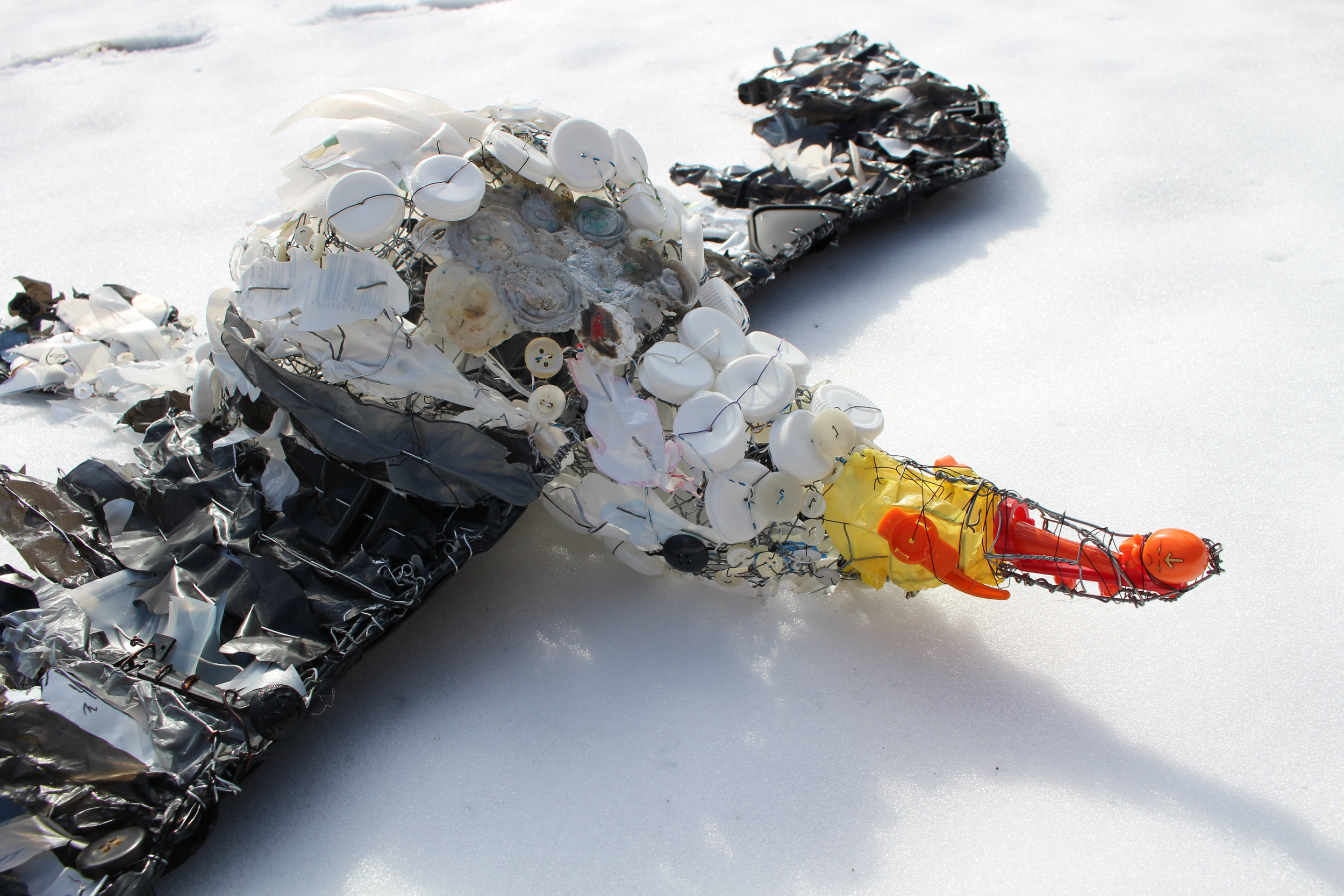
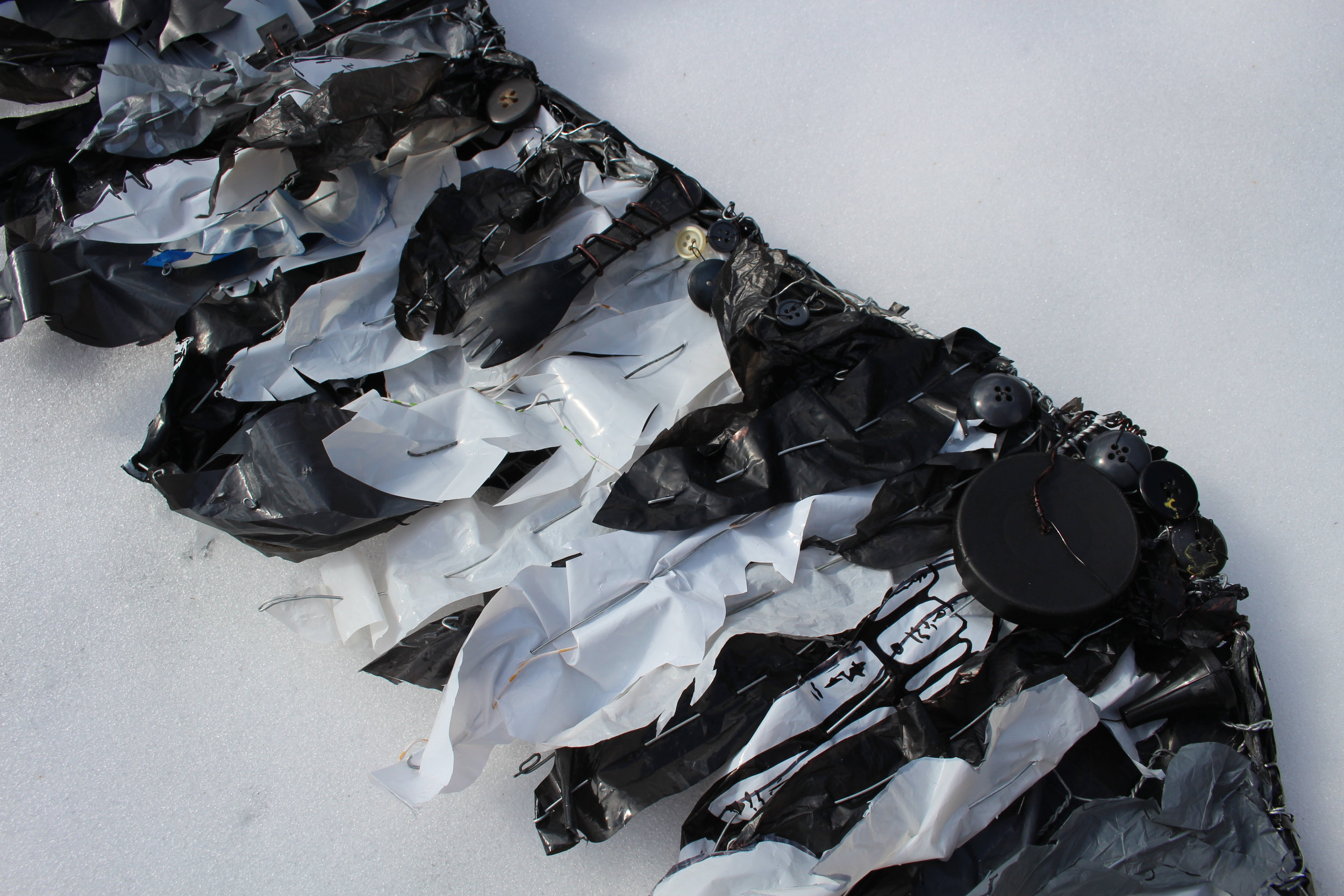
This Saturday, I’ll be running a collaborative workshop with Aya Kobayashi and Stephen Ives as part of BBC’s Get Creative event and Black Swan Arts Young Open exhibition, sponsored by Visual Arts South West. It will explore the creative process - how to shape an idea into form - experimenting with sculpture and sound technology, combining found/reclaimed materials.
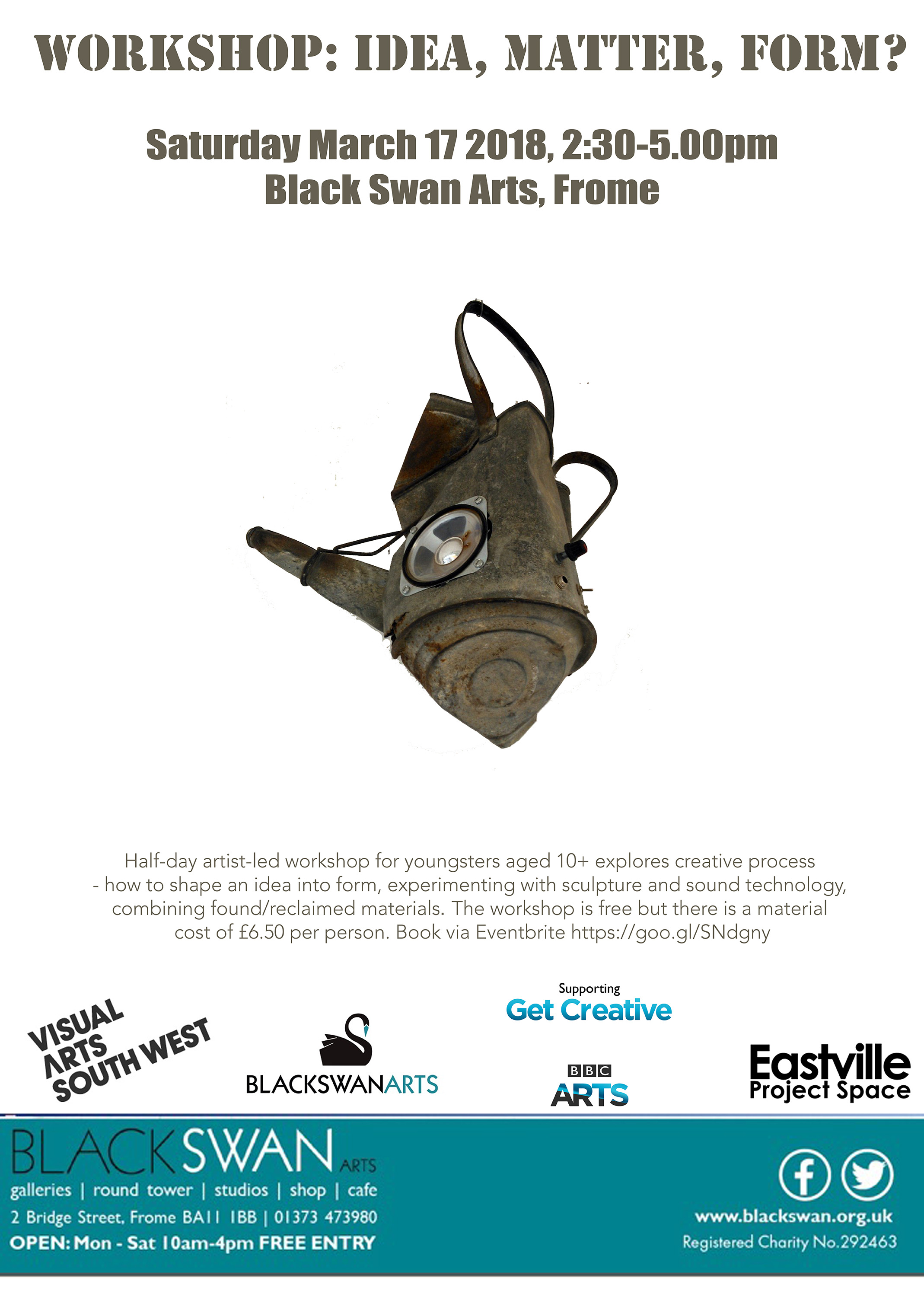
Book soon via Eventbrite (https://goo.gl/SNdgny) - spaces are filling up!
This season, I’ll be showing 2 of my sculptures in the The Cotswold Sculpture Park, The Paddock, Somerford Keynes, Cirencester GL7 6FE http://www.elementalsculpturepark.com/ from 1 April – 30th September, 10.30am-5pm (closed Tues and Wed), admission £5.
I've visited a few exhibitions locally including Messums Museum's 'Myth, Material & Metamorphosis' (that's a mouthful!) – fantastical sculpture by Kate McCgwire and Ann Carrington (image below), ceramics and narrative paintings with many surprising gems. It's always a joy to visit the wonderful tithe barn showing consistently high quality, exciting contemporary art.
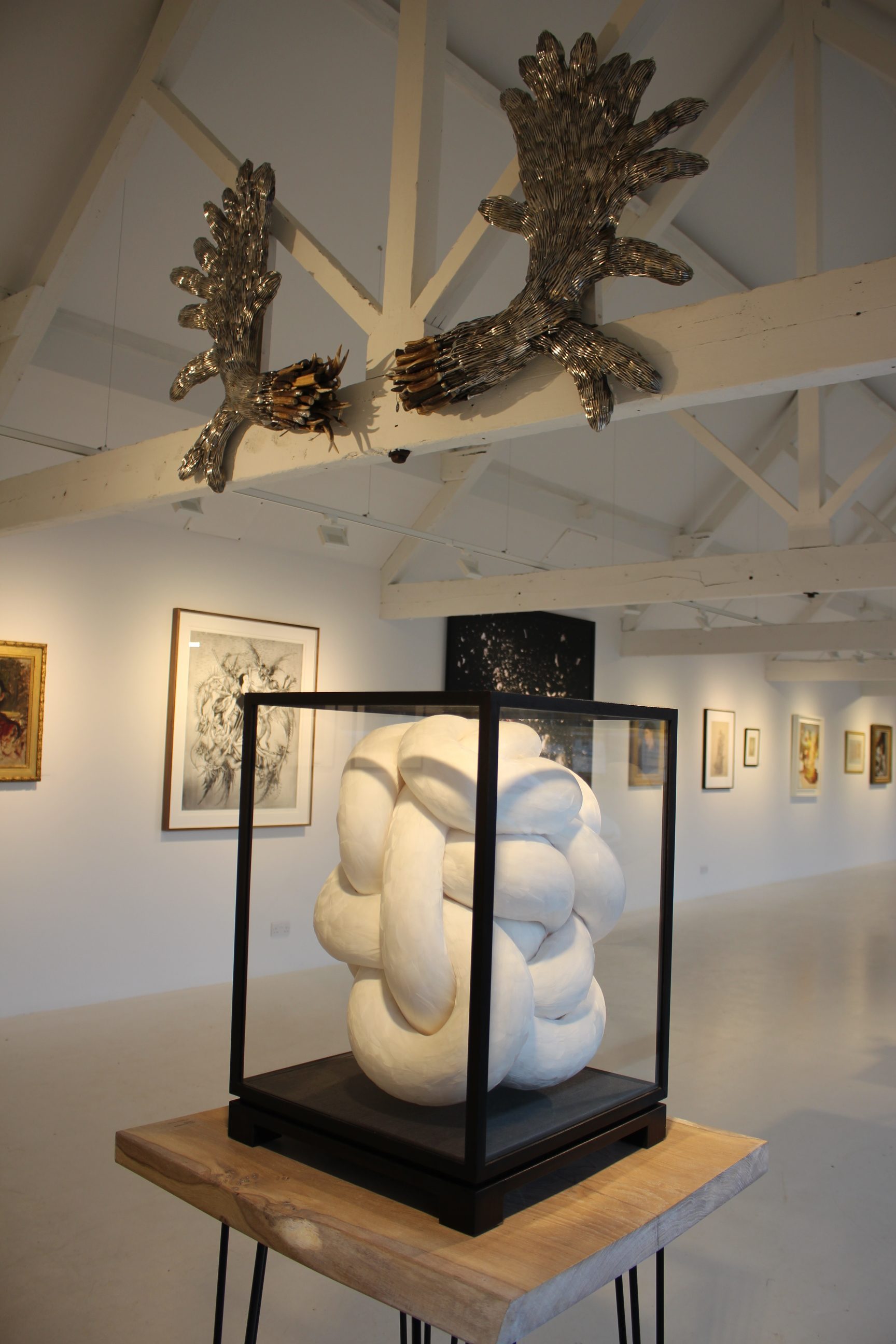
At The Edge, Bath, the Jerwood Drawing Prize comprises some great pieces. Amongst others, I loved the thick roll of paper covered in pencil – like a gleaming sheet of metal.
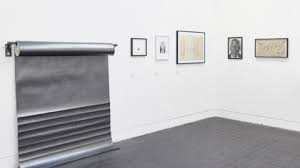
I’ve been invigilating at Hauser & Wirth Somerset for ‘The Land We Live In - The Land We Left Behind’. It’s been good to be able to keep returning to study the exhibits (numerous artworks/artefacts of interest). I’ve also managed to sell a couple of small pieces through the Honest Shop - part of the show. I’m doing a talk for Hauser & Wirth's Sound Bites programme on Beatrix Potter’s drawing of fungal spores entitled ‘Absidia’, Thursday 29 March, 2pm. Come along, it’s free!

Happy springtime!

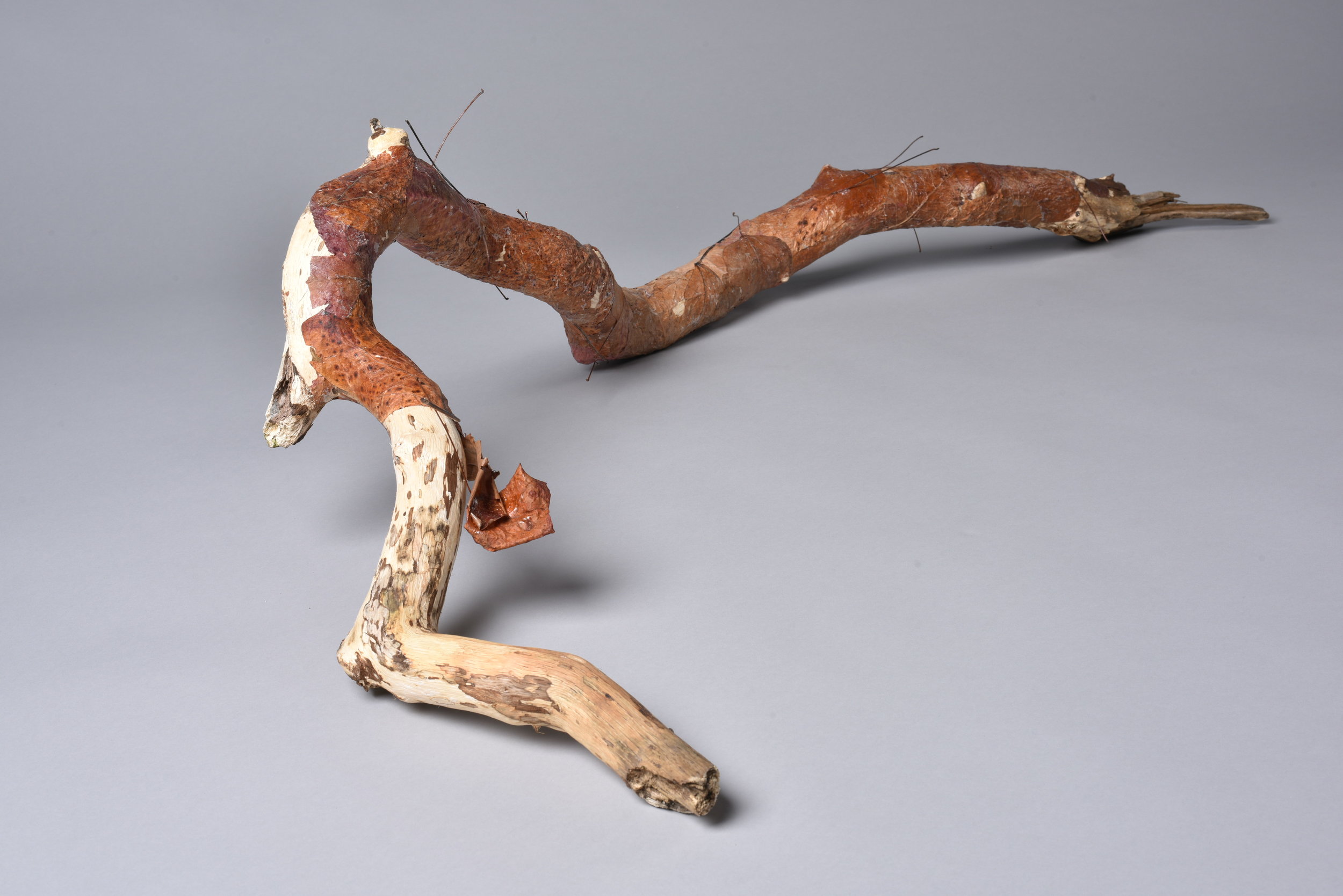 Hello to Winter and the festive season!
Hello to Winter and the festive season!












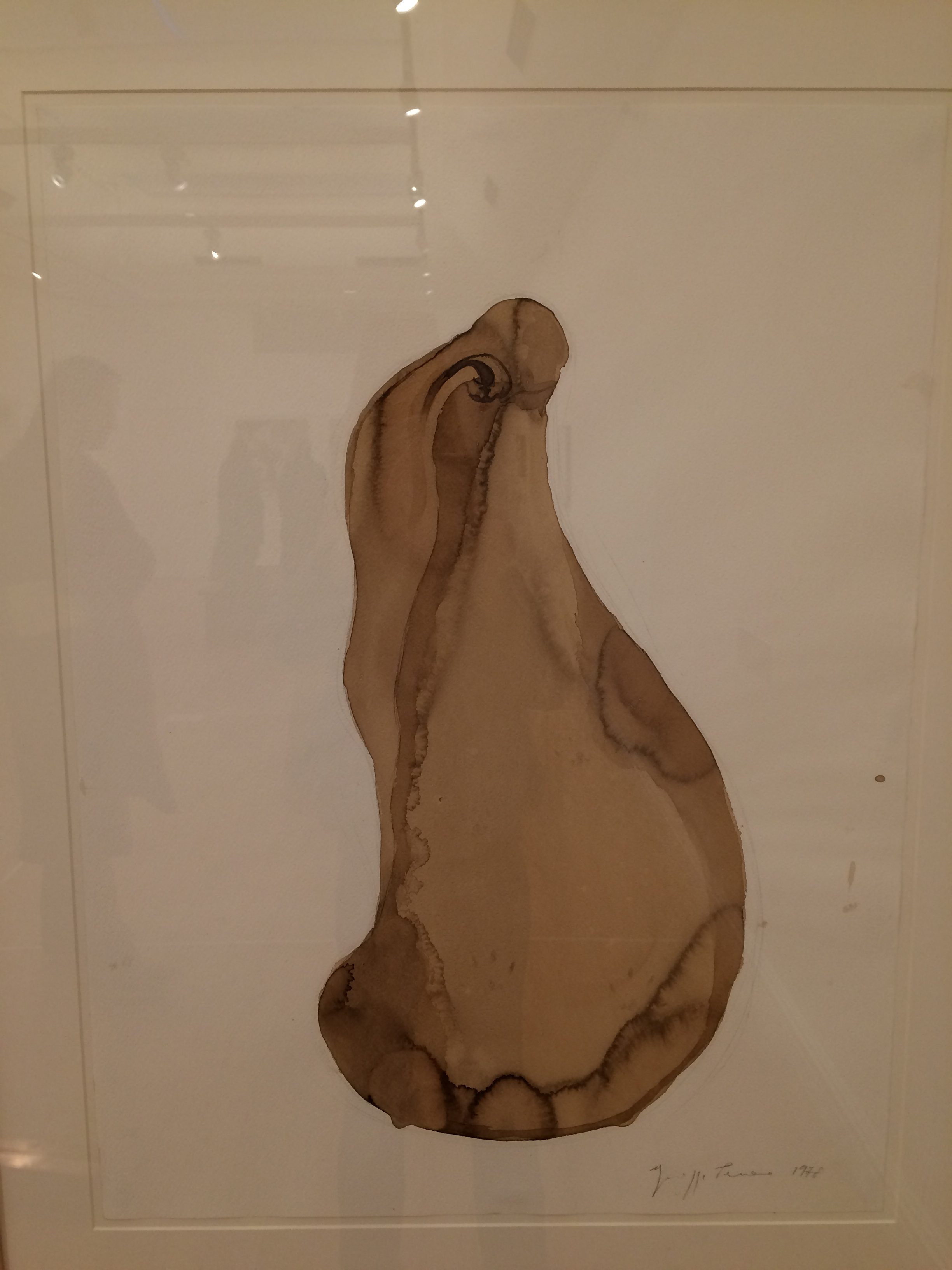

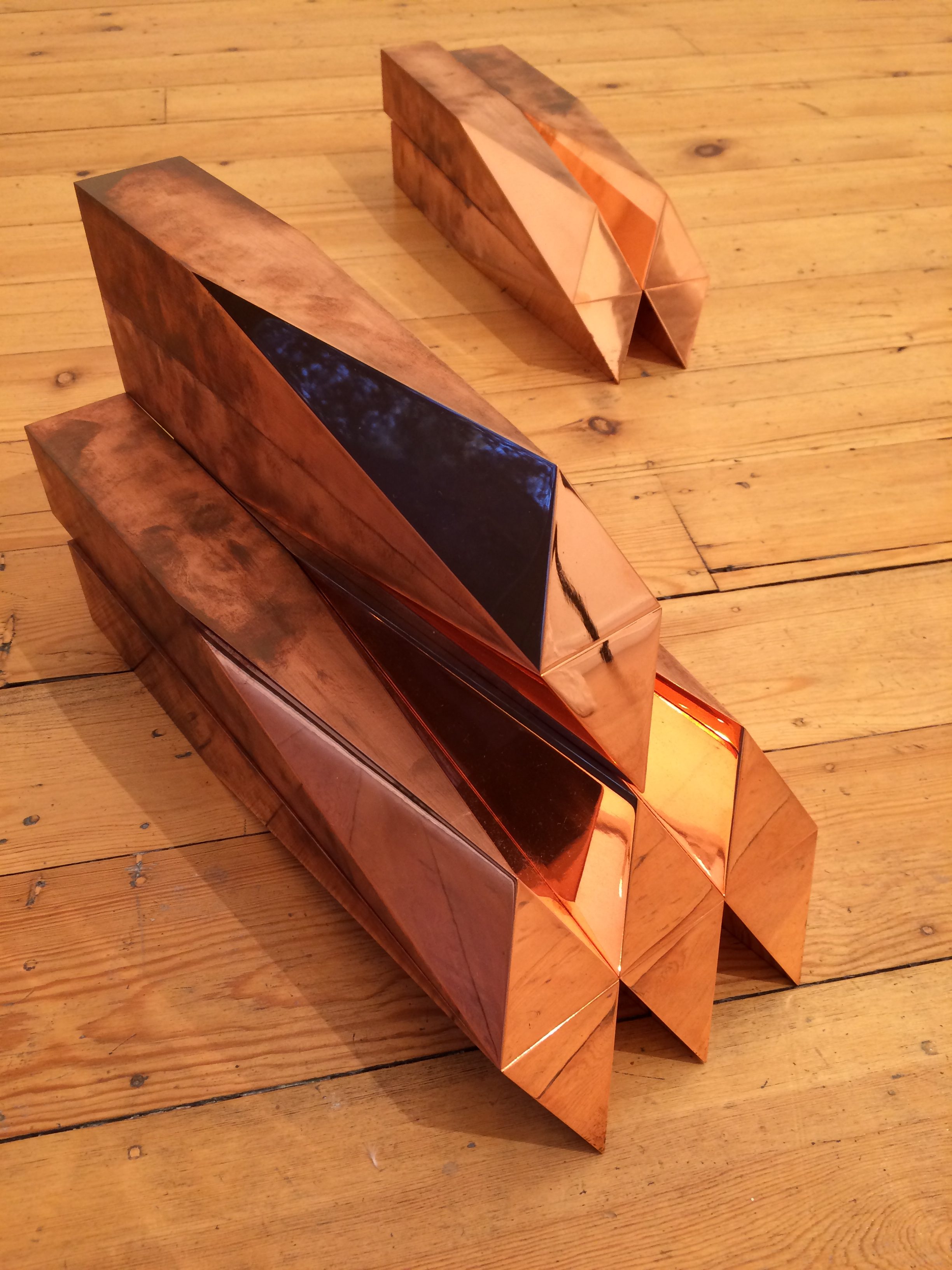











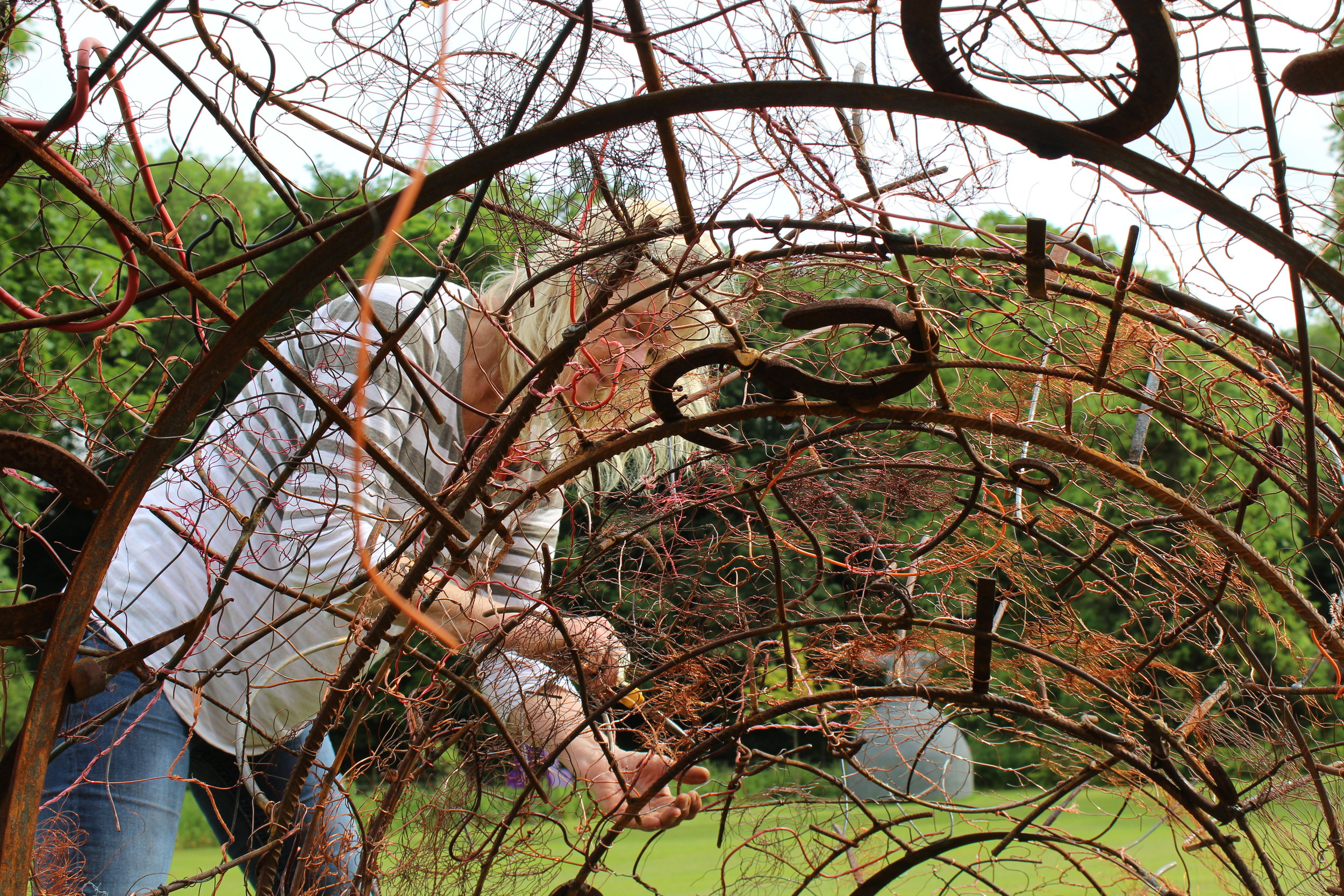
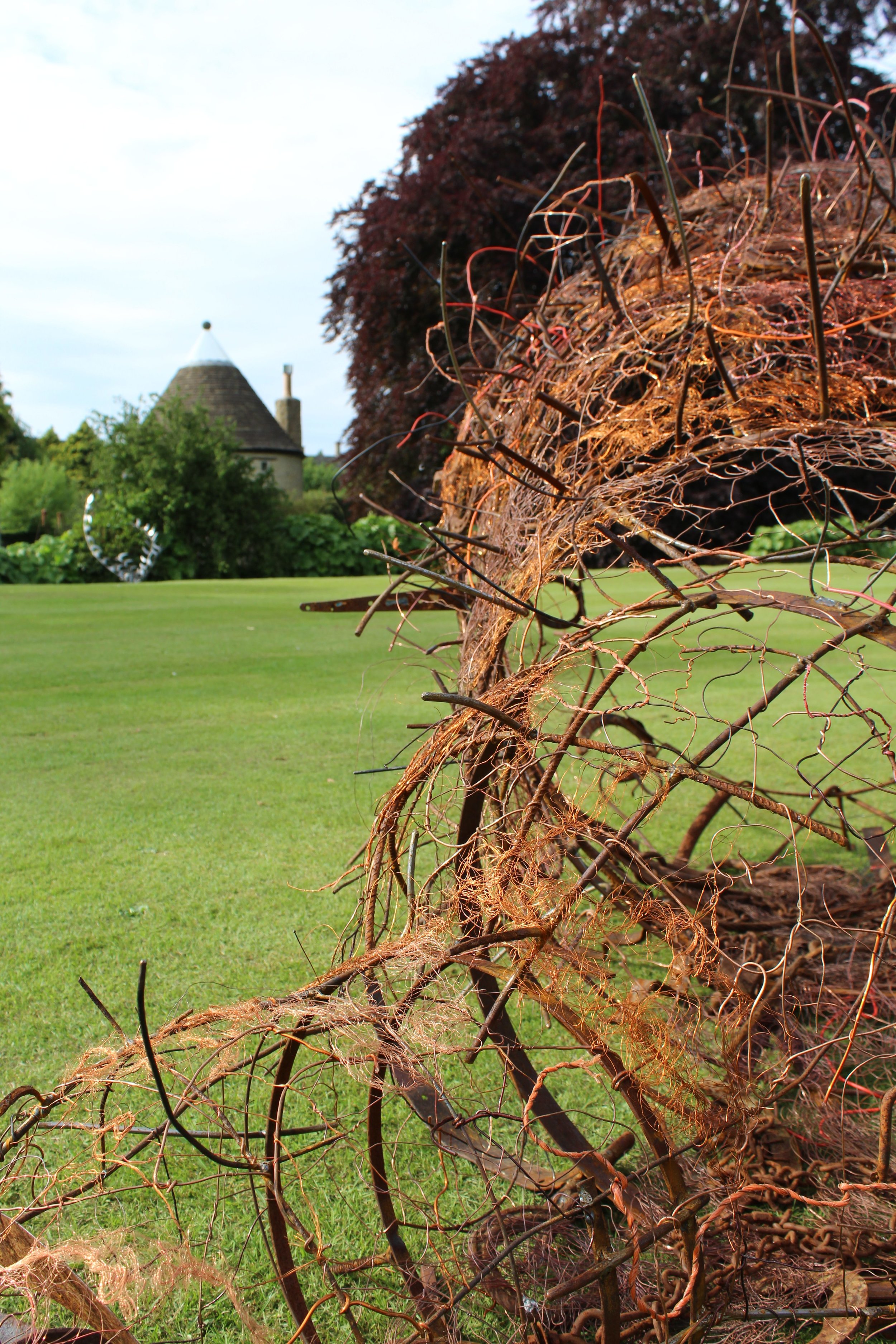
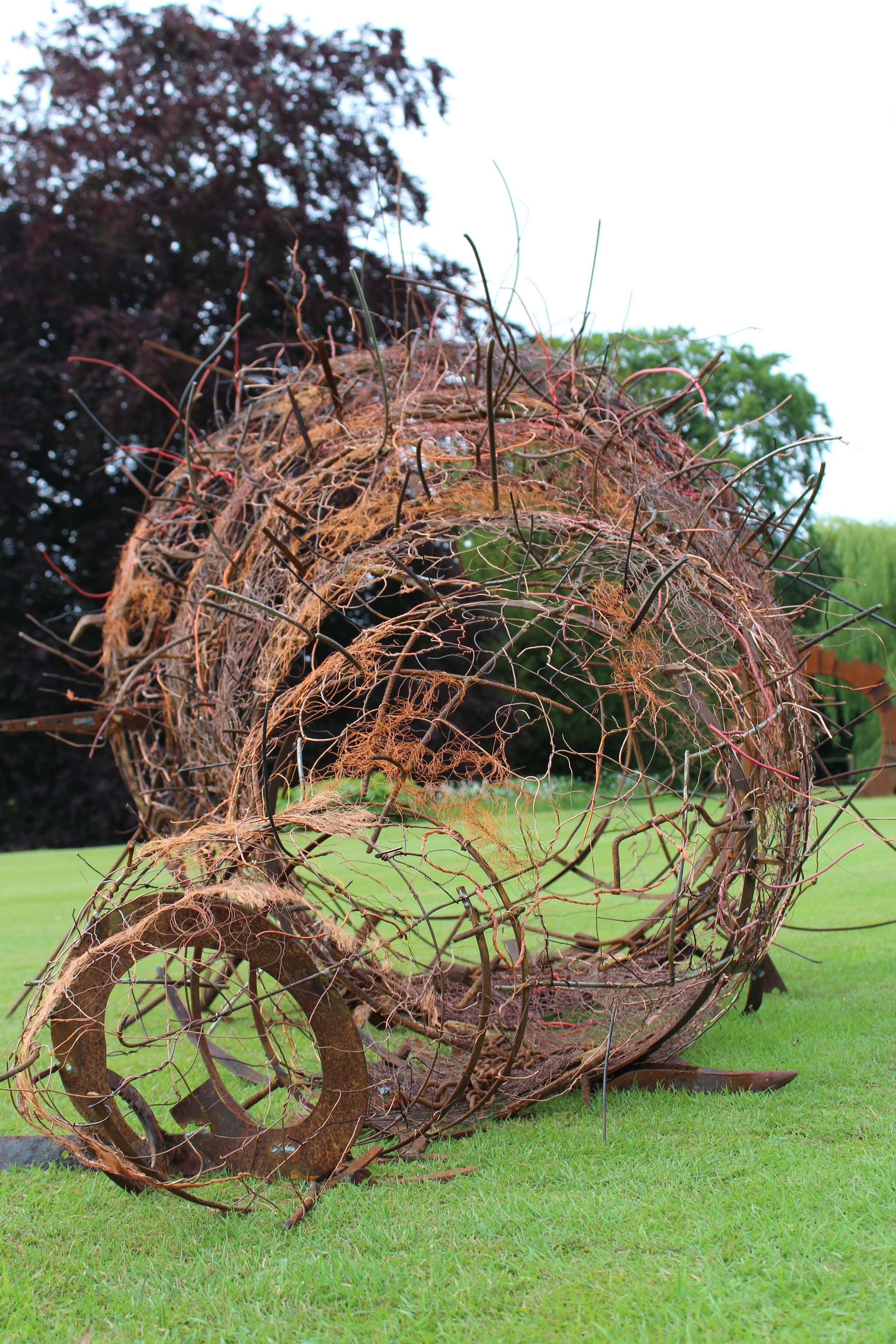
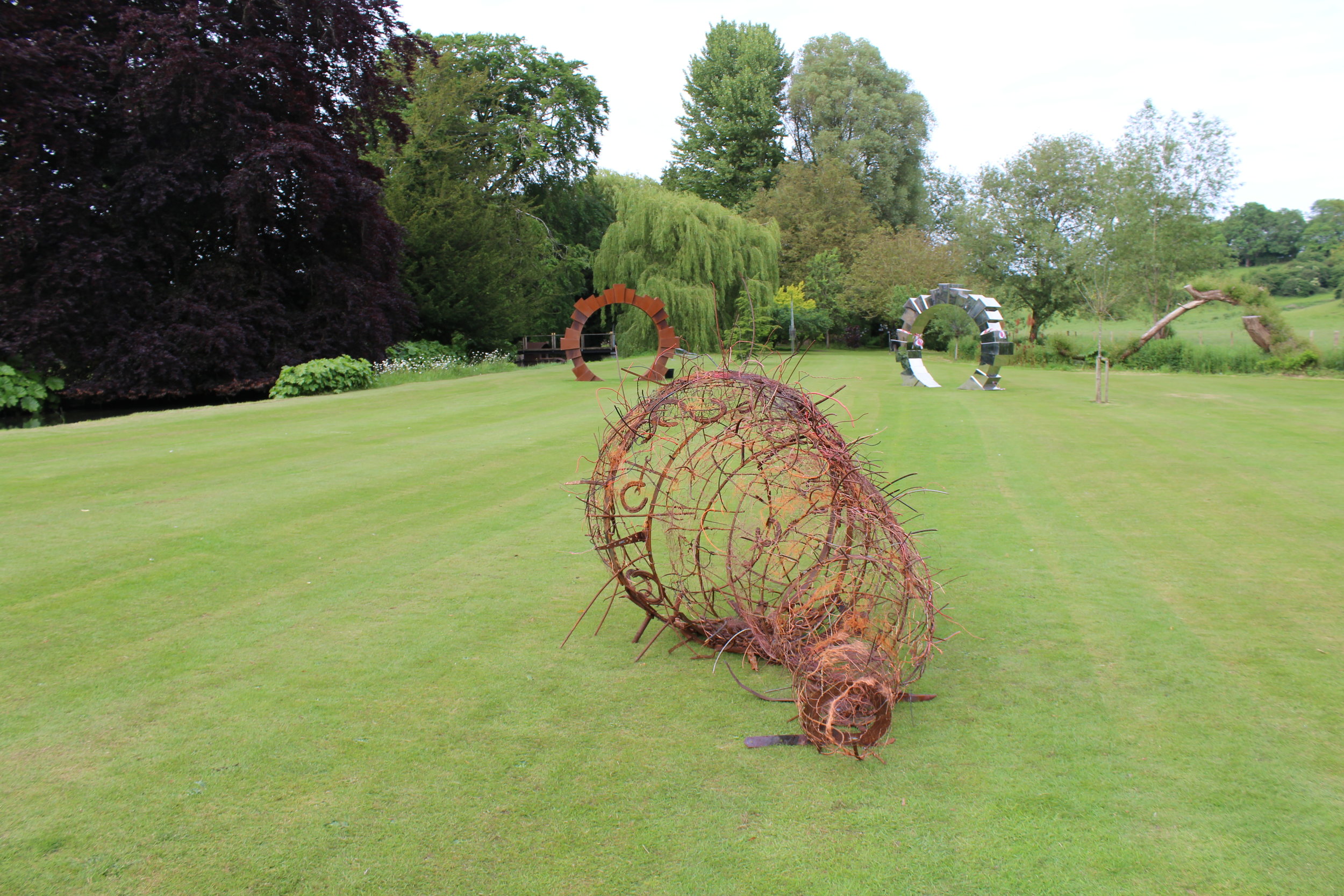 I completed a new piece 'Cocoon' last week for Fresh Air '17. Inspired by the puss moth cocoon and pupa, it is a drawing in space, welded, woven and wrapped. The exhibition starts this weekend and runs until 2 July.
I completed a new piece 'Cocoon' last week for Fresh Air '17. Inspired by the puss moth cocoon and pupa, it is a drawing in space, welded, woven and wrapped. The exhibition starts this weekend and runs until 2 July.